Unit 1 Study Guide - PLTW, MEDINT
1/62
Earn XP
Description and Tags
Made for Project Lead the Way's Medical Intervention's curriculum, Unit 1.
Name | Mastery | Learn | Test | Matching | Spaced |
|---|
No study sessions yet.
63 Terms
What are the categories of medical interventions?
Genetics, Pharmacology, Diagnostics, Surgery, Immunology, Medical Devices, & Rehabilitation
What are some client issues that can be measured & recorded?
Temperature, heart rate, blood pressure, rash, swollen glands, etc.
What are problems of patient reports that are considered symptoms?
Tiredness, sore throat, nausea, fever, etc.
Why shouldn’t antibiotics be given out for every infection and widespread use?
Because it leads to bacteria becoming resistant to that form of antibiotics, making infections harder to treat and increasing the risk of severe illnesses.
Bioinformatics
The collection, classification, storage, & analysis of biochemical and biological information using computers. Can be used to identify disease pathogens.
DNA sequencing
The scanning of DNA to figure out its particular code.
What is BLAST?
A program that uses DNA sequencing to compare with millions of logged genes.
Cerebrospinal fluid (CSF)
Spinal fluid, taken using a spinal tap/lumbar puncture. Processed to separate human components from disease-causing agents.
“Plating” CSF
Allows any bacteria growing in the cerebrospinal fluid (where there should be NO bacteria) to grow outside the human body.
lysed
When bacteria are grown, they are lysed (blown up) and their DNA is isolated, then amplified.
What is the process of DNA sequencing?
Isolate the disease-causing agent, plating the bacteria, lysing bacteria, isolation, & amplification.
ELISA
Enzyme-linked Immunosorbent Assay
Antigen
A type of protein found on the outside of every living cell & virus. They are the markers that cells use to identify each other.
Antibody
Produced by a type of leukocyte known as the B lymphocyte. Their job is to attach to foreign antigen, neutralizing them, and signaling other types of leukocytes (T lymphocytes) to destroy whatever it is attached to.
What shows a positive ELISA result?
A color change.
What are the steps for the ELISA test? (not including washes)
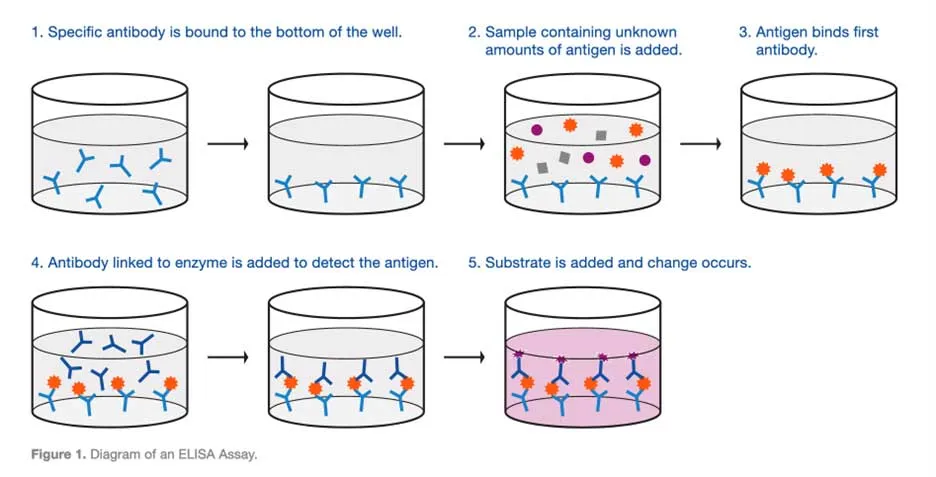
Qualitative result
Something that is simply observed (hot/cold, soft/hard, clear/blue, etc). Not measurable.
Quantitative result
A value that can be measured.
Serial Dilution
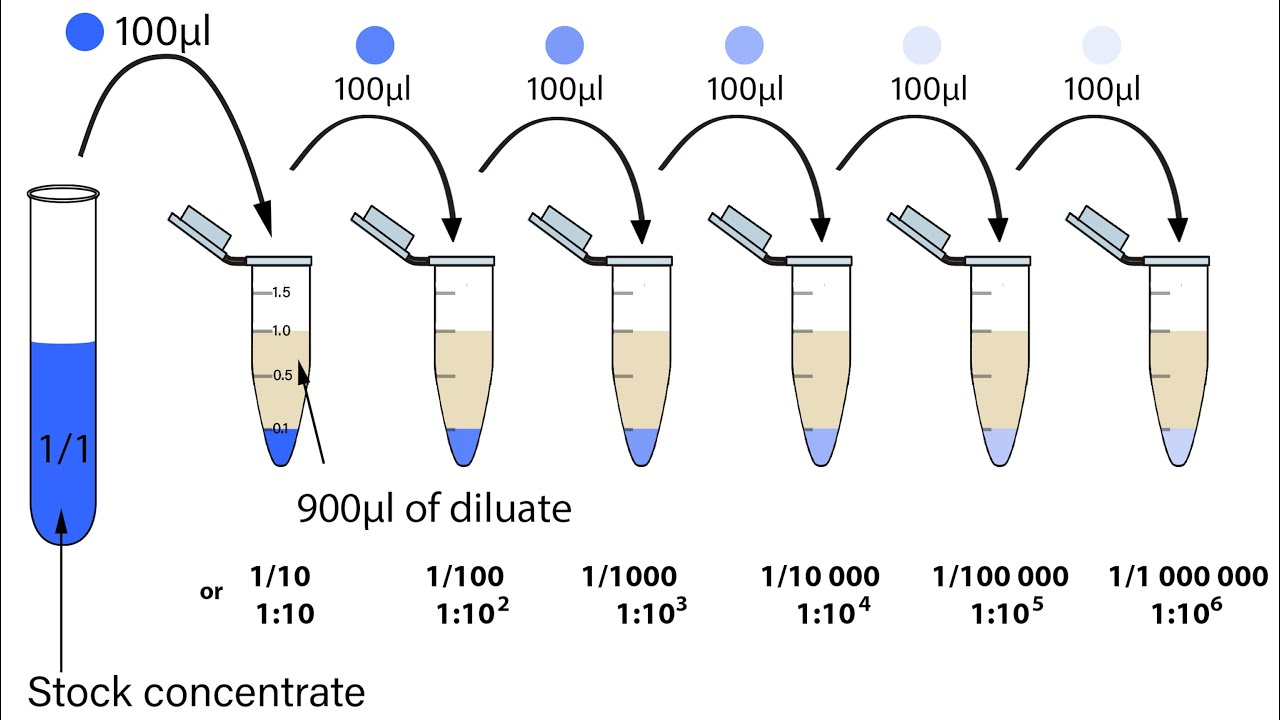
What is the difference between gram (+) and gram (-) bacteria?
Gram (+) bacteria have a very thick cell wall made mostly of peptidoglycan, while gram (-) bacteria have a much thinner wall.
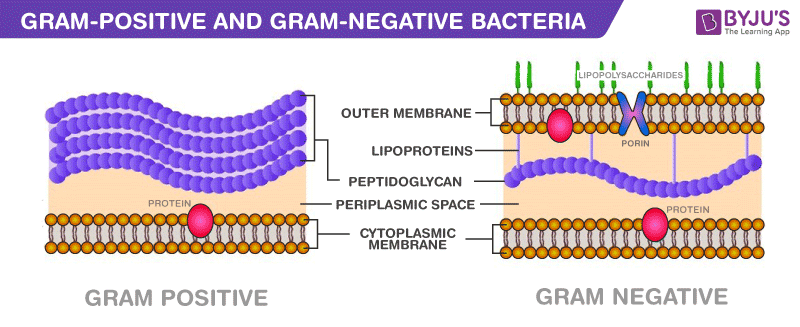
Gram (-) bacteria
Cell wall has multiple layers, including a thin layer of peptidoglycan
Outside payer is called the outer membrane, which is made of a lipid bilayer whose outside is composed of lipopolysaccharides called endotoxins
The outer membrane serves as a barrier to the passage of most molecules and contains specialized proteins called porins which allow certain molecules to pass through the membrane
The region between the plasma membrane & the outer membrane is called the periplasm & is filled with a gel-like fluid & proteins involved in a variety of cellular activities.
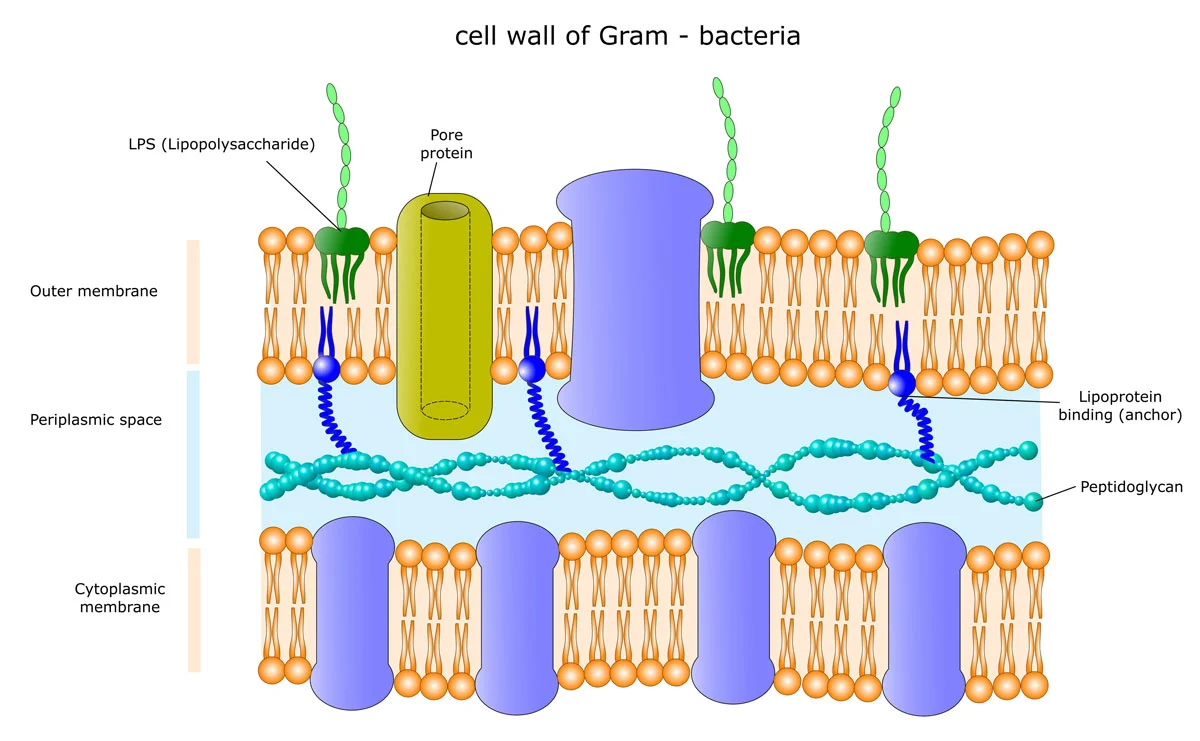
Gram (+) bacteria
Cell wall contains a thick layer of peptidoglycan & teichoic acids.
No outer membrane present
No porins present

What color does Gram (-) bacteria appear as?
reddish-pink
What color does Gram (+) bacteria appear as?
purple
Nucleoid
Gel-like region within the cytoplasm containing the single, circular, double-stranded DNA molecule. This chromosomal DNA is supercoiled, meaning tightly packed into a twisted dorm. The DNA contains all of the genetic info necessary for normal functioning of the cell.
Plasmids
Circular, double-stranded DNA molecules. Often code for proteins that are most advantageous to the cell.
Ribosomes
Structures involved in protein synthesis
Cell Wall
Rigid barrier that surrounds the cell, keeping the contents from bursting out. Peptidoglycan provides the rigidity for the cell.
Endotoxins
Lipopolysaccharide molecules that make-up the outer leaflet of the outer membrane of Gram (-) bacteria. Endotoxins are different from exotoxins, which aer proteins synthesized by both Gram (-) & Gram (+) bacteria and function as potent toxins.
How do antibiotics work?
Disrupting the pathways that bacteria use to survive.
B-Lactam Antibodies
inhibit enzymes involved in the final steps of cell wall synthesis. vary in effectiveness against both types of bacteria.
Tetracyclines
Bind to the 30S ribosomal subunit, preventing protein synthesis. Effective against both types.
Fluoroquinolones
Inhibit 1+ of a group of enzymes called topoisomerases. Effective against both types.
Sulfonamides
Inhibits the growth of many bacteria. (thats all it said on the official study guid, don’t hate the messenger)
What are the three methods that are commonly used in antibiotic resistance?
Transduction, transformation, & Conjugation
Transduction
transfer of DNA via viral delivery
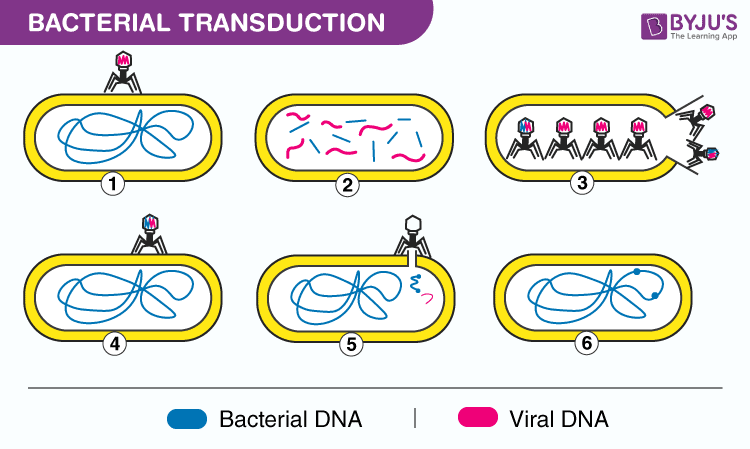
Transformation
Transfer of DNA from an already dead bacterial cell
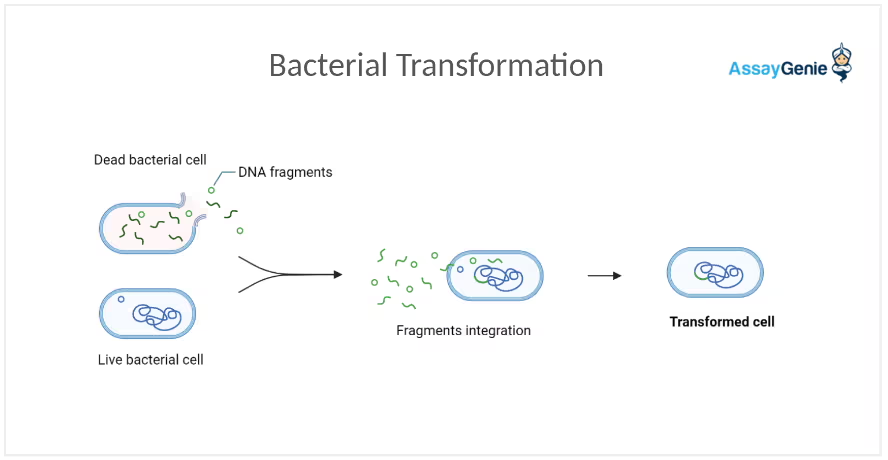
Conjugation
Plasmid transference.

Neisseria meningitidis
Bacterial meningitis
What are the three ossicles called?
Malleus, Incus, & Stapes

Frequency
The numbur of waves that pass a point in one second, measured in Hz.
Pitch
The way we perceive frequency
Amplitude
The height of sound waves.
Intensity
What we perceive as amplitude (loudness).
Vestibule
contains the semi-circular canals, which are filled with fluid. This shift in the fluid’s position allows you to know which way your head is positioned & keep balance.
What is the pathway of sound through the ear?
first, the pinna and ear canal direct sound waves to the eardrum, which vibrates. These vibrations pass through the three small bones of the middle ear—the malleus, incus, and stapes—which amplify them and transmit them to the oval window of the inner ear. This causes fluid in the snail-shaped cochlea to move, which in turn stimulates tiny hair cells that convert the vibrations into electrical signals. The auditory nerve then carries these signals to the brain for interpretation as sound
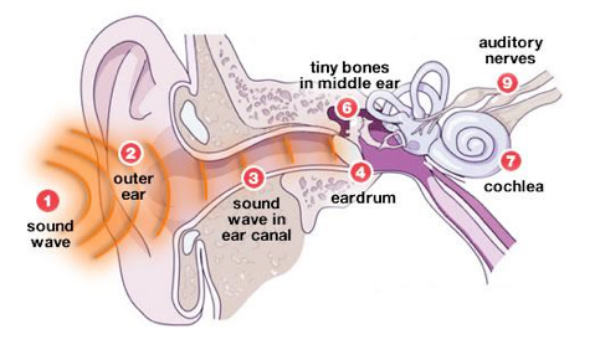
Conductive Hearing loss
Caused by damage to the wave-carrying portions of the ear (the auditory canal, the tympanic membrane, or the ossicles).
Sensorineural Hearing loss
Damage to the cochlea or auditory nerve.
Rinne test
Involves using a time & a tuning fork to determine the difference between conductive & sensorineural hearing loss.
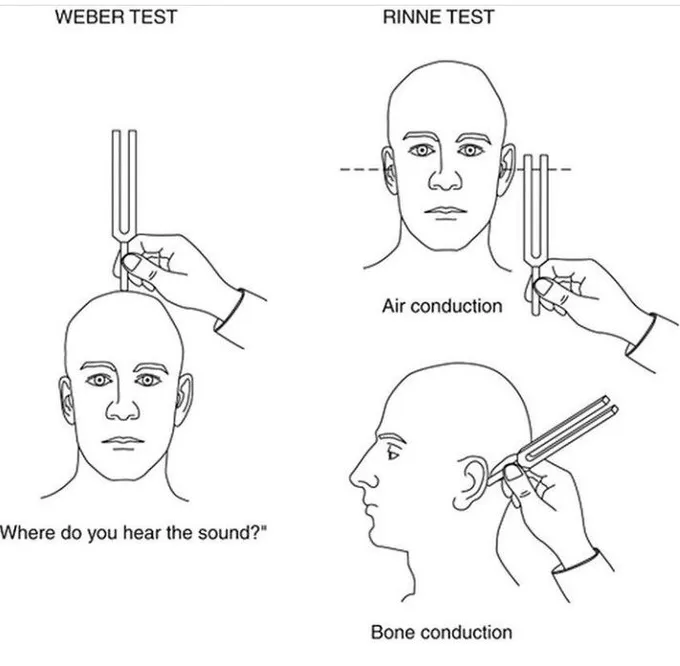
Audiograms
uses an audiometer to test hearing sensitivity
What is the range for normal hearing?
0-20 dB
What is the range for mild hearing loss?
21-40 dB
What is the range for Moderate Hearing Loss?
41-55 dB
What is the range for Moderate-to-severe hearing loss?
56-70 dB
What is the range for Severe hearing loss"?
71-90 dB
What is the range for Profound hearing loss?
>90 dB
How is conductive hearing loss shown on an audiogram?
When bone conduction is at least 10 dB better than air conduction.
Similar-pathogen vaccine
uses alive, weakened, or related bacteria to trigger an immune response in the body
Attenuated Vaccine
mimics natural infection by reducing the virulence of a pathogen
Toxoid vaccine
Uses an inactive bacterial toxin (toxoid) to stimulate protection against the toxoid rather than the bacteria.
Killed Vaccine
Contain dead or inactivated pathogens that should stimulate an immune respose
Subunit vaccine
uses specific, purified fragments of a pathogen, such as a small peptide or sugar.
Naked-DNA vaccine
Uses a piece of a virus or bacteria/s genetic material to prompt our cells to make a specific protein which then makes that body make specific antibodies.